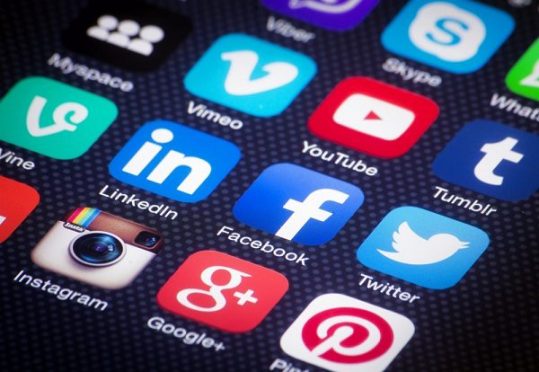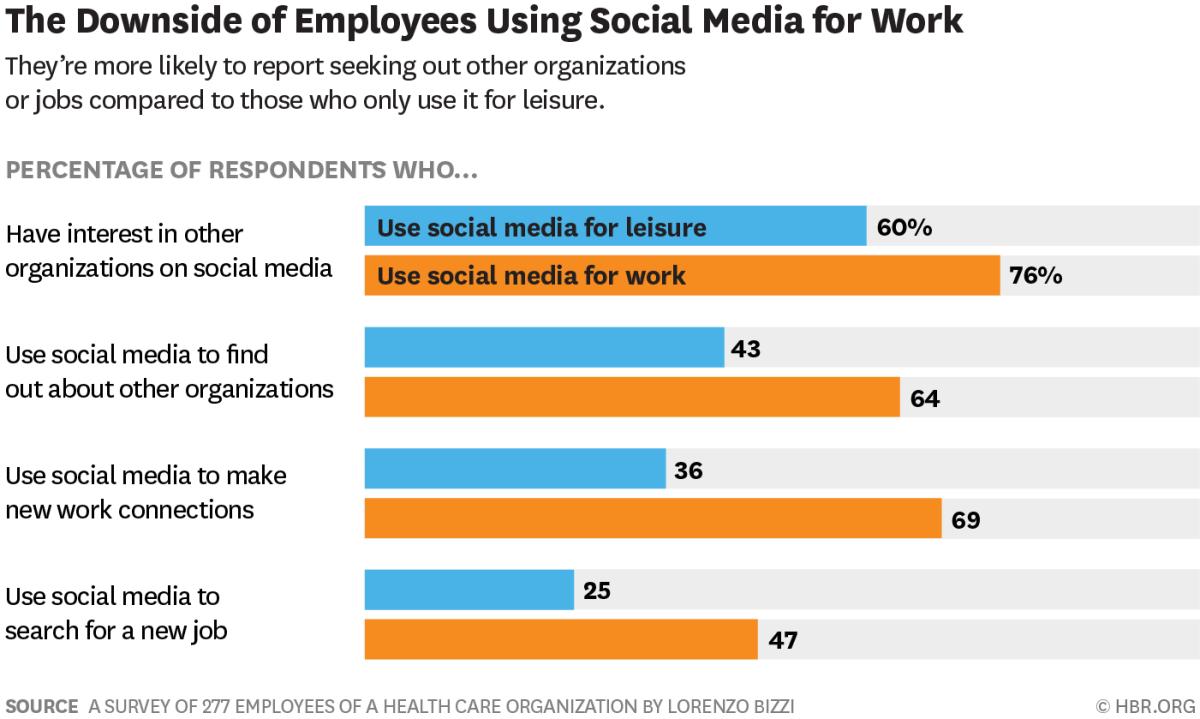 Engaging with new prospects andpotential new employers on social media may help employees findother employers they think are more interesting or a better fit.(Photo: Shutterstock)
Engaging with new prospects andpotential new employers on social media may help employees findother employers they think are more interesting or a better fit.(Photo: Shutterstock)
It should not come as a big surprise that management andemployees have differing views on a myriad of topics. In the21st century, this includes the need for or usefulness of social media in the workplace. Of courseemployers think allowing social media can hurt productivity and attention, while today'syounger millennial workforce see it as a necessity. Asit turns out, the millennials have a point.
|These are essentially the findings discussed in the latestHarvard Business Review. According to LorenzoBizzi, assistant professor in the Department of Management atCalifornia State University, Fullerton, any worries aboutproductivity decline are “misguided,” he says. “Social mediadoesn't reduce productivity near as much as it kills employeeretention.”
|Related: Gen Z: What employers need to know about recruitingand retaining them
|Bizzi interviewed more than 250 employees within a healthcareorganization. He found that people, who engage with their fellowemployees on social media and through media blogs etc., tend to bemore motivated and come up with innovative ideas. However, whenemployees engage with people outside of the workplace, they areless motivated and show less initiative. “These findings,” heexplains “suggest that the effects of social media depend on whoemployees interact with; employees who interact with theircolleagues share meaningful work experiences, but those makingconnections outside the organization are distracted andunproductive.”
|Unfortunately, the research also shows that 75 percent ofemployees who use social media at work are more likely to leave theorganization. Bizzi suggests that engaging with new prospects andpotential new employers on social media may help employees findother employers they think are more interesting or a better fit. Headds that only 60 percent of employees who use social media forleisure are likely to leave the organization.
| The two-sided coin of workplacesocial media creating greater creativity, but more likely to leave,creates a problem for managers and employers. Bizzi says employerscan implement solutions such as leveraging social media trainingthat focuses on positive behaviors, like collaboration, forexample.
The two-sided coin of workplacesocial media creating greater creativity, but more likely to leave,creates a problem for managers and employers. Bizzi says employerscan implement solutions such as leveraging social media trainingthat focuses on positive behaviors, like collaboration, forexample.
Managers, adds Bizzi, can create their own social media groupsfor employees who give them an outlet to be more creative andcollaborative (perhaps where there wasn't one before). It can alsobe used as a recruitment tool if employers use social media torecognize employee accomplishments.
Complete your profile to continue reading and get FREE access to BenefitsPRO, part of your ALM digital membership.
Your access to unlimited BenefitsPRO content isn’t changing.
Once you are an ALM digital member, you’ll receive:
- Critical BenefitsPRO information including cutting edge post-reform success strategies, access to educational webcasts and videos, resources from industry leaders, and informative Newsletters.
- Exclusive discounts on ALM, BenefitsPRO magazine and BenefitsPRO.com events
- Access to other award-winning ALM websites including ThinkAdvisor.com and Law.com
Already have an account? Sign In
© 2024 ALM Global, LLC, All Rights Reserved. Request academic re-use from www.copyright.com. All other uses, submit a request to [email protected]. For more information visit Asset & Logo Licensing.








